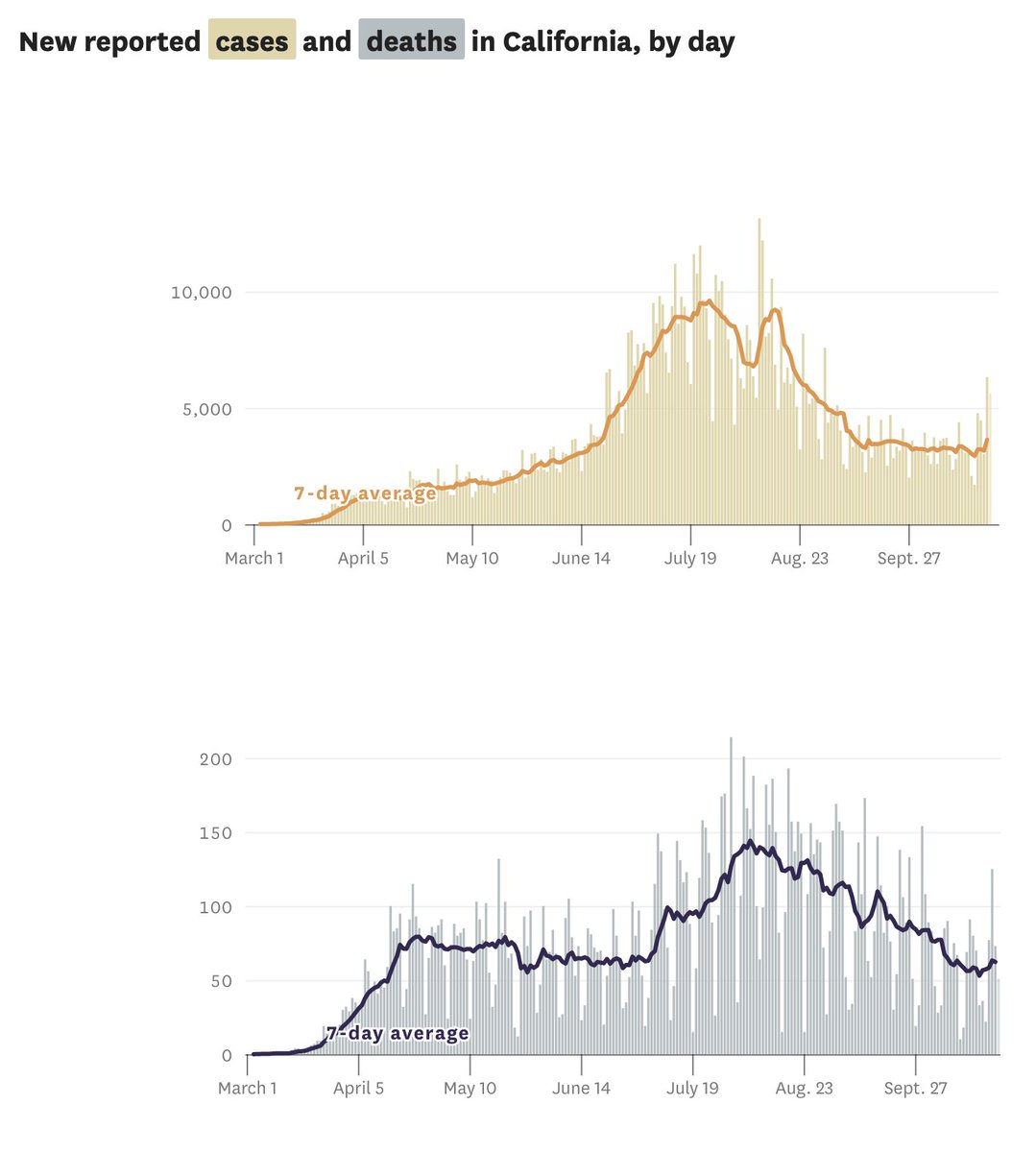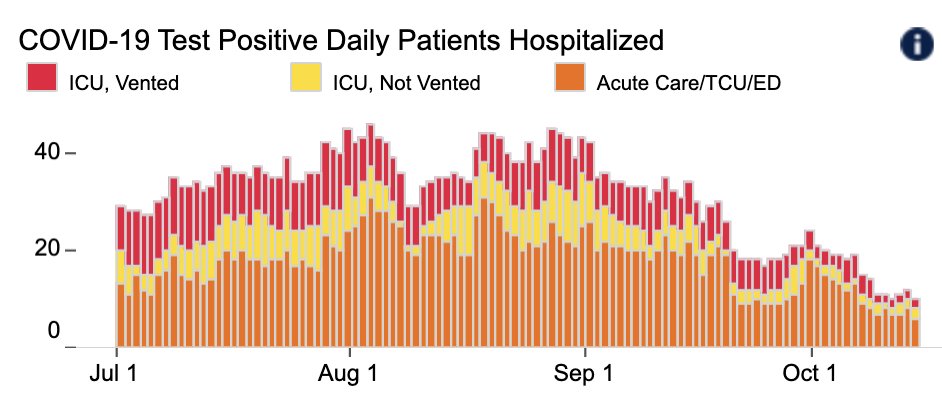
Note that as hospitals get overwhelmed – as appears to be happening in many regions – the welcome fall in mortality rates we've seen since March may erode. While some of the mortality improvements can be explained by proven benefits of dexamethasone (+/- remdesivir) and... (1/3)
... changing demographics (younger & healthier patients), much of it was due to improvements in hospital care and less overwhelmed MD and nursing staffs. If hospitals get hammered, as they were in NY in the spring, I'd expect an uptick in these mortality rates, sadly. (2/3)
Today's curves (cases top; deaths bottom) show the huge surge in cases & usual lag in deaths (though deaths starting to rise). Whether these curves ultimately rise in sync will hinge on whether hospitals & ICUs can avoid being overwhelmed. Current situation isn't promising. (3/3) 

I've gotten a few comments re: remdesivir. @NEJM study tinyurl.com/y2cfubt5 found trend toward benefit (29d mortality=11.4% w/ Rem; 15.2% w/ placebo; hazard ratio 0.73; 95% CI, 0.52 to 1.03). So we can't say for certain it lowers mortality (didn't reach p<0.05), but it might.
• • •
Missing some Tweet in this thread? You can try to
force a refresh







